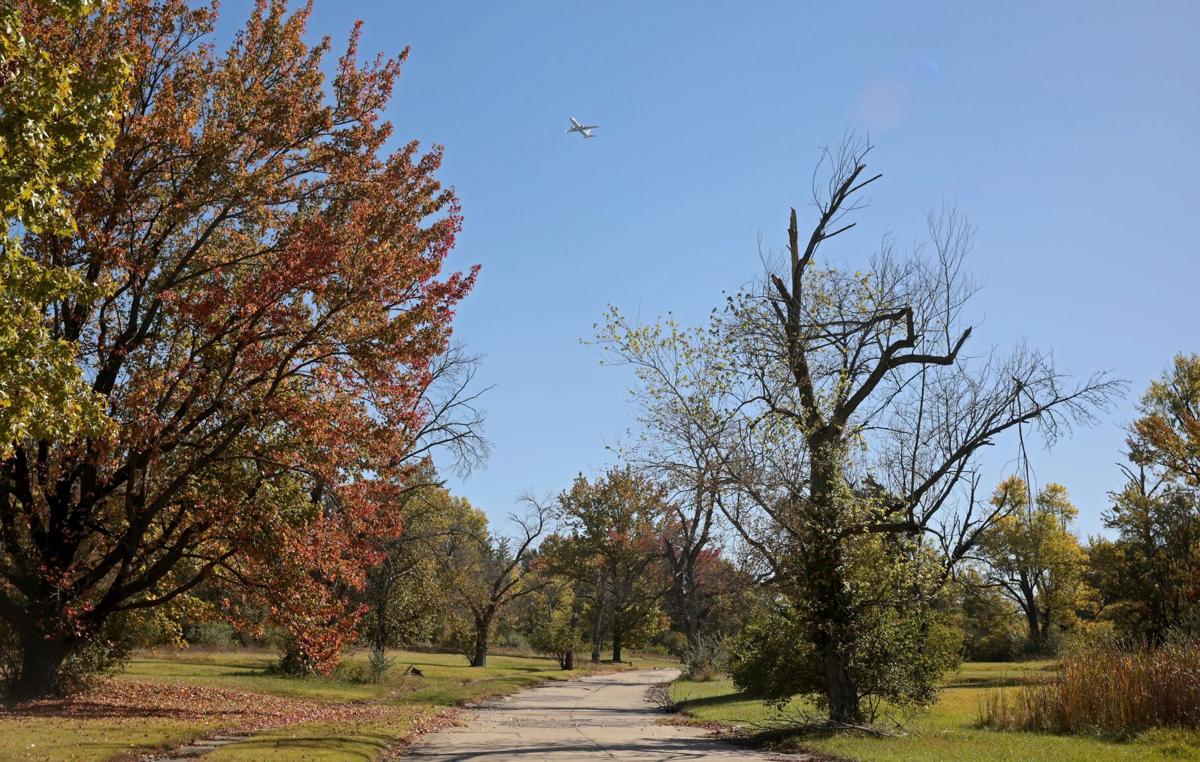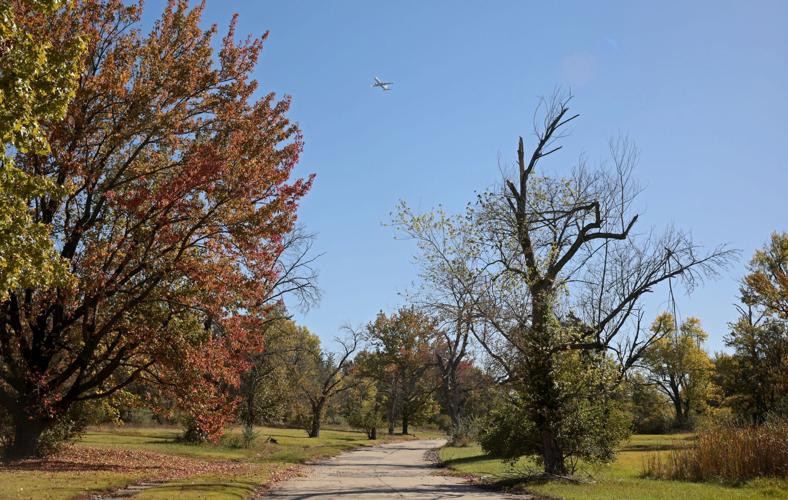BRIDGETON ŌĆö Decades ago, the airport bought out and razed a thriving community here, making way for an expansion and creating a noise buffer between runways and residents. Thousands of people were displaced, and empty streets were left to decay.
Now, ūŅą┬ąė░╔įŁ┤┤ Lambert International Airport is looking to redevelop a large swath of the former neighborhood. The airport is soliciting formal proposals to turn a vacant 315-acre site near Interstate 270, known as West Carrollton, for industrial or commercial projects. Officials want to take advantage of the areaŌĆÖs proximity to the airport, highways and the Norfolk Southern rail line to draw businesses that could bring new jobs ŌĆö and revenue ŌĆö to Lambert and the city of Bridgeton.
Federal aviation regulations prohibit the land from being used for residences. But airport officials say they are allowed to negotiate a long-term lease with developers for projects like warehousing, cargo handling, manufacturing or a ŌĆ£limited aeronautical useŌĆØ supporting airport operations.
People are also reading…
ŌĆ£ItŌĆÖs unfortunate that everything happened, and it never should have happened the way it did,ŌĆØ said Desy Schoenewies, who grew up in what was West Carrollton and maintains a website dedicated to its history. ŌĆ£But as long as it is of benefit to the community of ūŅą┬ąė░╔įŁ┤┤, it would be nice to see, finally, something good come out of this.ŌĆØ
The potential development would be the largest project in Bridgeton, a city of about 11,300 residents, and the latest addition to a large industrial and manufacturing corridor in northwest ūŅą┬ąė░╔įŁ┤┤ County. Bridgeton also owns roughly 47 acres around the Lambert site that could be a part of any new project, city Administrator Kevin Bookout said in an interview.
The airport has issued a formal request for proposals due by Jan. 31, anticipating construction as early as 2027.
ŌĆ£STL (the airport) hopes that this project helps the tax base of Bridgeton and creates good local jobs for the immediate area,ŌĆØ said Jerry Beckmann, airport deputy director of planning and development, in a written statement.

A street in the former Carrollton neighborhood in Bridgeton is seen┬ĀSunday, Oct. 13, 2024.
ŌĆśNot our land anymoreŌĆÖ
In the 1990s and 2000s, Lambert bought out West Carrollton and elsewhere in Bridgeton, plus homes in Berkeley and Kinloch, in a $2.6 billion project to build a third runway and create a noise buffer around it. At the time, Lambert was TWAŌĆÖs primary hub, and officials projected flight traffic would increase.
But the move was bitterly opposed by Bridgeton, whose residents organized to sue ūŅą┬ąė░╔įŁ┤┤ and Lambert, which it owns and operates. Opponents attacked the proposed airport expansion with a blitz of radio ads and followed then-ūŅą┬ąė░╔įŁ┤┤ Mayor Vincent Schoemehl Jr. with picket signs while he ran for governor.
Ultimately, more than 2,000 homes, plus dozens of businesses, several schools, churches and parks were displaced ŌĆö and BridgetonŌĆÖs population plummeted by more than 4,000 people. The new billion-dollar runway opened in 2006 but saw far less traffic than predicted after the airline industry tanked, and American Airlines, which had bought TWA, closed its Lambert hub.

Parts of the former Carrollton neighborhood of single-family homes in Bridgeton, photographed on Sunday, Oct. 13, 2024, have been abused as a dumping ground like this lot on Brampton Drive. The city of ūŅą┬ąė░╔įŁ┤┤ acquired the large area decades ago for proposed airport expansion.
Schoenewies grew upon Brumley Drive in West Carrollton until she left for college. She said the neighborhood was tight-knit and remembers riding her bike, playing with the neighborhood kids and walking to stores and parks. Many kidsŌĆÖ parents worked for McDonnell Douglas (now Boeing), and TWA (now American Airlines) or for Lambert.
ŌĆ£It was a quintessential American neighborhood,ŌĆØ said Schoenewies. She runs 56 Houses Left, a website devoted to the neighborhood, and is writing a book about the neighborhoodŌĆÖs displacement.
Her mother stayed in West Carrollton until 2006, when she was among the last residents to get a buyout offer. Many residents felt they didnŌĆÖt get a fair price for their homes, and the buyout process was ŌĆ£gut wrenching,ŌĆØ Schoenewies said.
Now, the vacant streets are a ŌĆ£creepyŌĆØ reminder of the history, she said. Many former West Carrollton residents have moved on, Schoenewies said.
ŌĆ£ItŌĆÖs not our land to say what happens to it anymore,ŌĆØ she said. ŌĆ£IŌĆÖd like to see ūŅą┬ąė░╔įŁ┤┤ do something with that space.ŌĆØ
ŌĆśNothing to sneeze atŌĆÖ
Beckmann, the airport planning deputy director, said redevelopment of West Carrollton became possible after the FAA Reauthorization Act of 2018 limited the agencyŌĆÖs authority to regulate the use of non-aeronautical property, ŌĆ£increasing the latitude for development.ŌĆØ The airport had also fielded inquiries about the site, Beckmann said.
Bridgeton owns vacant land across three sites bordering the Lambert property, including 10 acres along 270 that once housed the Carrollton neighborhood public pool and clubhouse and roughly 33 acres that were once OŌĆÖConner Park. The city is willing to lease or sell land to support redevelopment and hopes the airport will include hotels or restaurants along Interstate 270, Bookout said.

A building on Celburne Lane, seen Sunday, Oct. 13, 2024, is one of just a few that still stand in the former Carrollton community in Bridgeton. The parking lot is used to store rock, mulch and other materials.
The siteŌĆÖs location, its access to air, highway and rail transport, and the regionŌĆÖs industrial base could give the airport a major advantage in drawing potential developers, said Mike Boyd, a Denver-based aviation consultant with Boyd Group International. That could include companies that build airplane parts or provide other services to the aeronautical industry, he said.
ŌĆ£We donŌĆÖt realize the number of subcontractors out there making components, overhead bins, seats, latches, things like that,ŌĆØ he said. ŌĆ£315 acres is not exactly anything to sneeze at, and the airport is doing the right thing trying to do something with it.ŌĆØ

Many entrances to former neighborhood streets in the former Carrollton neighborhood in Bridgeton, like Lonsdale Drive from Celburne Lane, on Sunday, Oct. 13, 2024, is blocked by gates at the entrance. The city of ūŅą┬ąė░╔įŁ┤┤ acquired the large area decades ago for proposed airport expansion.














